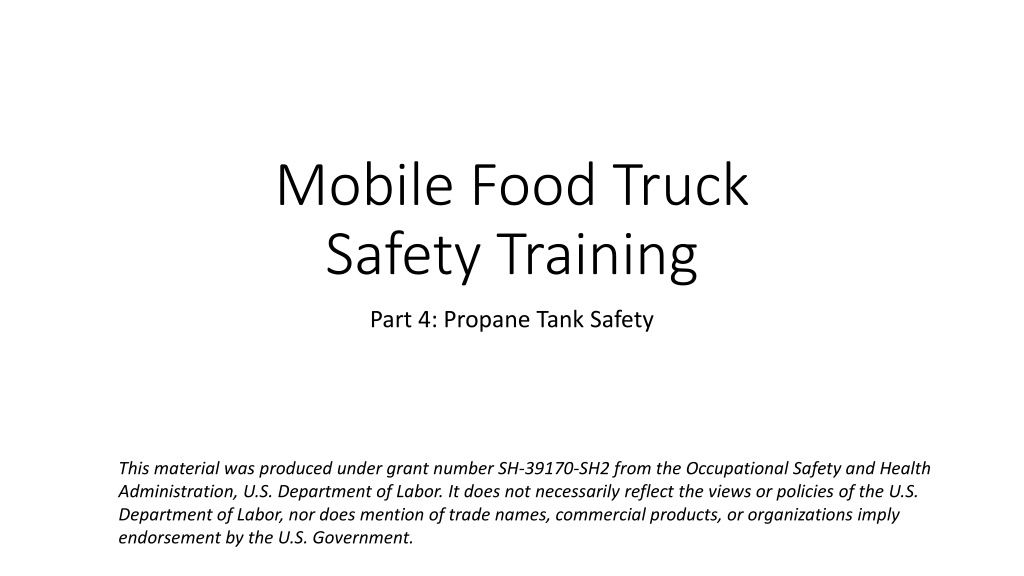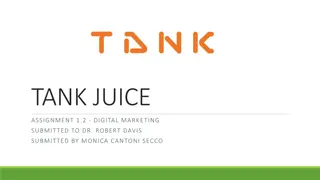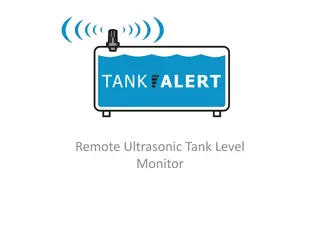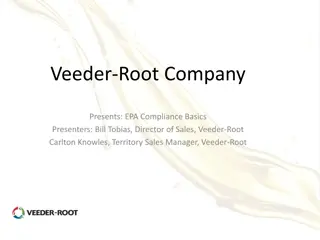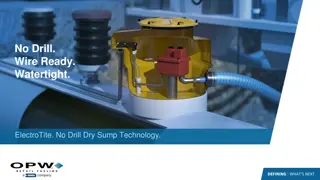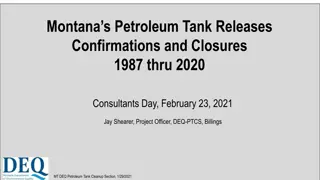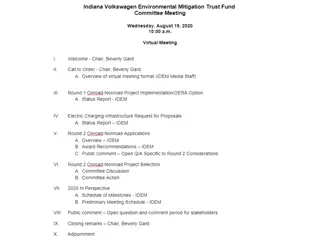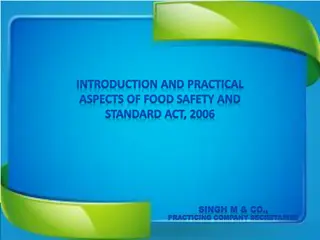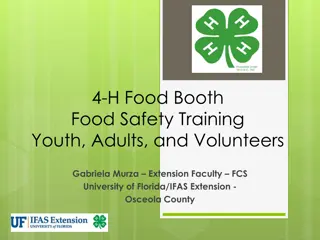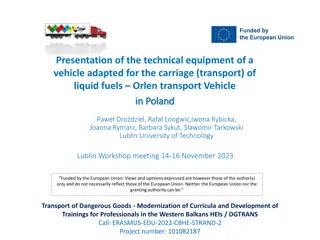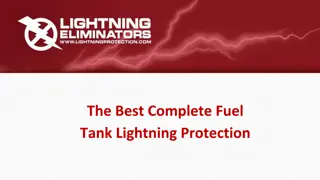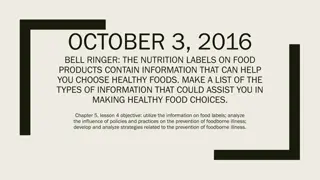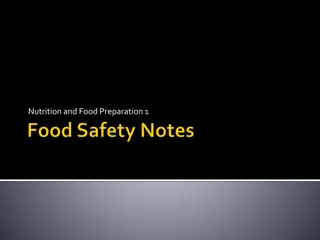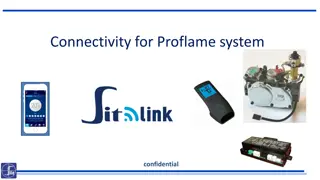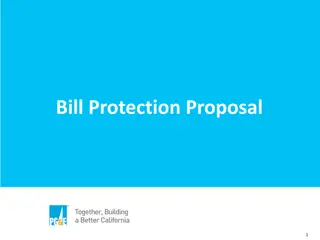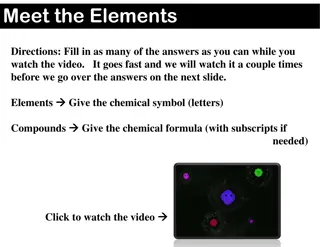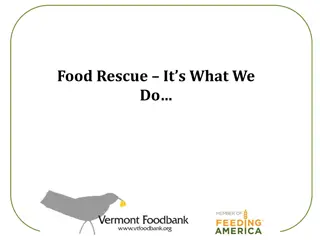Propane Tank Safety Training for Mobile Food Trucks
Understand the hazards associated with propane tanks in mobile food trucks, including the properties of propane, safety controls, and real-life accident examples to emphasize the importance of safety protocols and regulations.
Download Presentation

Please find below an Image/Link to download the presentation.
The content on the website is provided AS IS for your information and personal use only. It may not be sold, licensed, or shared on other websites without obtaining consent from the author. Download presentation by click this link. If you encounter any issues during the download, it is possible that the publisher has removed the file from their server.
E N D
Presentation Transcript
Mobile Food Truck Safety Training Part 4: Propane Tank Safety This material was produced under grant number SH-39170-SH2 from the Occupational Safety and Health Administration, U.S. Department of Labor. It does not necessarily reflect the views or policies of the U.S. Department of Labor, nor does mention of trade names, commercial products, or organizations imply endorsement by the U.S. Government.
Objectives After this module, the trainee will be able to: Identify basic properties of propane and hazards associated with propane tank usage Recognize and use hazard controls to reduce the risk from those hazards
Propane Tank Safety Propane: A Hazardous Material that Deserves Respect Propane is one kind of Liquefied Petroleum Gas (LP-Gas) that may be transported in tanks and is used in cooking operations According to NFPA, 68% of food truck fires are the result of leaks or structural failures of propane tanks A 20-pound propane tank = explosive energy of 120 sticks of dynamite Note: Personal Injury Lawyers are starting to add Food Truck Accidents as a specialty litigation service DISCLAIMER: State and Local Regulations may vary; the guidance provided here are based on NFPA guidance AND the expectation that managers will refer to local authorities and properly trained professionals when necessary.
What makes a propane tank hazardous? Propane is a gas at room temperature Priced by the gallon, but sold by the weight 1 pound of propane = 0.236 gallons (60oF), so 100 lb= 23.6 gallons 1 gallon= 4.24 lbs (gas is heavier than air, but lighter than water) Propane is pressurized to be in liquid state inside the tank As the valve is opened, propane in gas phase travels to burners Heating a tank holding propane causes it to expand, increases the pressure inside the tank Challenges: Hot Climates: need room for gas expansion in tank Cold Climates: low pressures may require refilling even when tank is not empty Propane Gas Liquid Propane 80% Capacity
What caused the 2014 Philadelphia Accident? July 1, 2014: Philadelphia Food Truck Explosion kills 2, injures 13 Explanation: https://youtu.be/1YLLfOreaVE Factors/Sequence of Events: The 100-gallon propane cylinder was dated 1948, had no relief valve High temperatures cause the propane to expand, pressure builds without the relief valve Eventually, the cylinder ruptures, liquid propane escapes, turns to gas Split second on video where vapor cloud is seen before ignition Any ignition source nearby ignites the propane
What makes propane hazardous? Propane is pressurized to be in liquid state inside the tank As the valve is opened, propane in gas phase travels to burners Propane Gas Controls to prevent accidents (Engineering, Work Practices) Do NOT fill more than 80% On a hot day, the propane needs space to expand without posing a threat Pressure Relief Valve Allows for release of propane if interior pressure rises White/Reflective Exterior Reflect heat rather than absorb it Keep distance from ignition sources Released propane gas is denser than air, can travel Liquid Propane 80% Capacity
Propane Tank Safety Checklist-General Check Description LP-Gas containers cannot exceed 200 gallons individually or total combined capacity Tanks must be made of a corrosion-resistant material (such as aluminum) and be free of any rusted areas or physical damage If painted, there is not a required color, but it is suggested that it is a light reflective color Containers must be within a current qualification date. -1st Requalification: Within 12 years of the date of manufacture -All Others: Within 5 years after Cylinders cannot be inside the vehicle for any reason, including during use or for transport. Propane Safety Video 1 (WorkSafe BC): https://youtu.be/rHRwS2B3Vv0 Propane Safety Video 2 (WorkSafe BC): https://youtu.be/vCSi6tXcRJs
Propane Tank Location/Mounting Check Description Containers must be mounted securely to the exterior of the vehicle in an approved area. They cannot be on the front or the side of the unit. Ensure that portable gas containers are in the upright position and secured to prevent tipping over. Containers must be securely mounted to prevent jarring loose, slipping, or rotating. All containers must be protected from damage from loose objects and from damage due to overturns or similar vehicle accidents. A bumper protecting containers mounted on the rear shall extend at least six inches beyond the container and be of substantial fabrication matching or exceeding the strength of the existing bumper for protection of the container in the event of a rear end collision. Path of Egress not blocked in case of emergency Must be at least 10 ft from any ignition source
Propane Lines/Piping Systems Check Description Check that the main shutoff valve on all gas containers is readily accessible. Ensure that portable gas containers are in the upright position and secured to prevent tipping over. Perform leak testing on all new gas connections of the gas system. Perform leak testing on all gas connections affected by replacement of an exchangeable container. Document leak testing and make documentation available for review by the authorized official. Ensure that on gas system piping, a flexible connector is installed between the regulator outlet and the fixed piping system.
Propane Lines/Piping Systems (cont.) Check Description Piping materials used must be approved for LP Gas service. Install a flexible connector between the regulator outlet and the fixed piping system. Piping must be protected from vibration, abrasion, and damage. Piping systems must be tested for leaks at the normal operating pressure to ensure a gas-tight system. Leak tests must be performed after every transit event. Vibrations and bumps may cause fittings to loosen. Leak tests are performed by spraying the joints with an approved liquid leak detecting solution. (Bubble test) If leaks are found, the unit will not be operated until permanently fixed Bubble Test: https://youtu.be/2GA4vwg8ay4
Refilling Tanks: The 80% Fill Rule Propane, like water, will expand when heated but the amount of propane expansion is 17x greater! (For the same volume and temperature change) If the tank measures 80% full (by volume) on a mild April day, the same tank might be 85% or higher (by volume) at the 4th of July. Same MASS of propane, but it is taking up a greater VOLUME Leaving 20% space in the tank is a cushion against pressure buildup during hot weather Propane Gas Liquid Propane 80% Capacity Who is refilling your tanks? What method do they use? Only use professionals who are trained to handle propane, not a local gas station or box store (i.e. can they explain how it works?)
Refilling Tanks- Overflow Valve **Do NOT fill the tank full, and then allow Overflow Valve to release extra into the air. Propane Gas Dangerous in multiple respects: Will its release be predictable? When you expect it and in open air? or When you are at an event with people around? Where does the released propane go? It will sink and flow on ground. If an ignition source is nearby Liquid Propane 80% Capacity
Refilling- How can I tell if a tank is 80% full? Find the Tare Weight of the tank Weight the tank when it is empty Tare: 15 lb (= tank empty) Current: 17 lb Weigh the propane tank before refilling If tank weighs >Tare Weight, some propane remains (= 15 lb Tank + 2 lb LP) Calculate how much total weight is needed Tank Weight (Tare) + Propane Weight x 80% Ex. 18 lb empty + (20 lb x 80%) = 18 lb + 16 lb = 34 lb Total Weight= Tare Wt + Propane Wt x 80%
Refilling Propane Tanks- Discussion of Challenges Topic 1: Small or large tanks (20-100lb)? Issue 2: When and how will tanks be filled? Option 1: Smaller tanks Events? Convenience? Option 1: One tank-not full prior to event Topping off tank- acceptable? Option 2: Larger tanks More capacity for busy events? How easily removed for refill? Required to be removed for refill? Option 2: Two 100 lb tanks Use one until it s low, then switch to 2nd tank and fill up 1st tank later Owners: When you consider options, do you consider safety? And what risks are you willing to expose your business to?
To Summarize: Propane tanks present a unique hazard to the food truck industry compared to brick-and-mortar restaurants. Multiple hazard controls should be used to control propane tank hazards. When refilling propane tanks, the 80%-Fill Rule should be followed. Companies should only use professionals with propane training and experience for refilling needs and piping installation.
